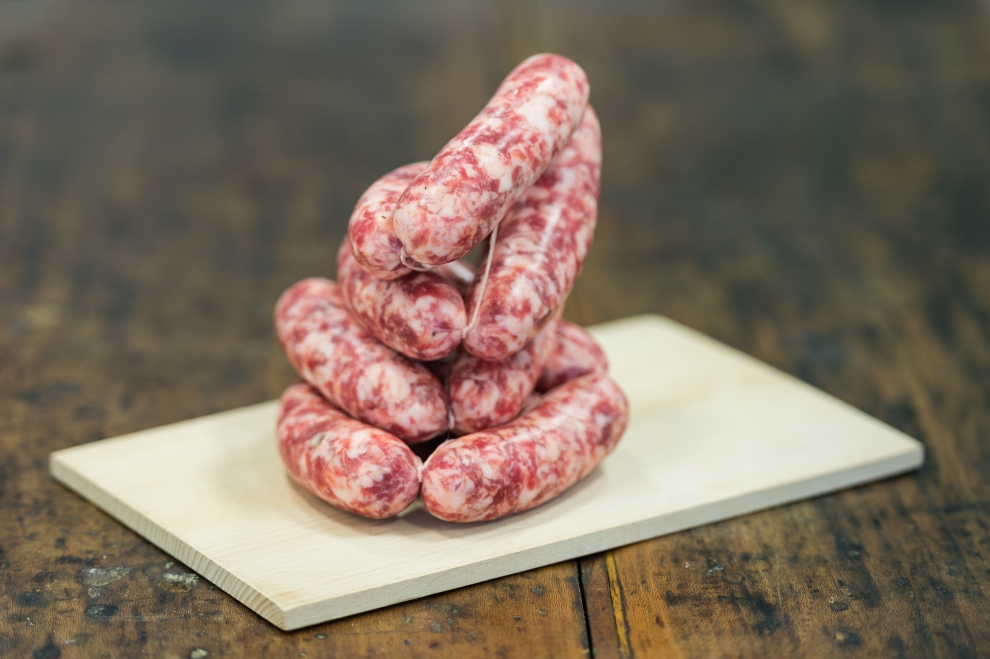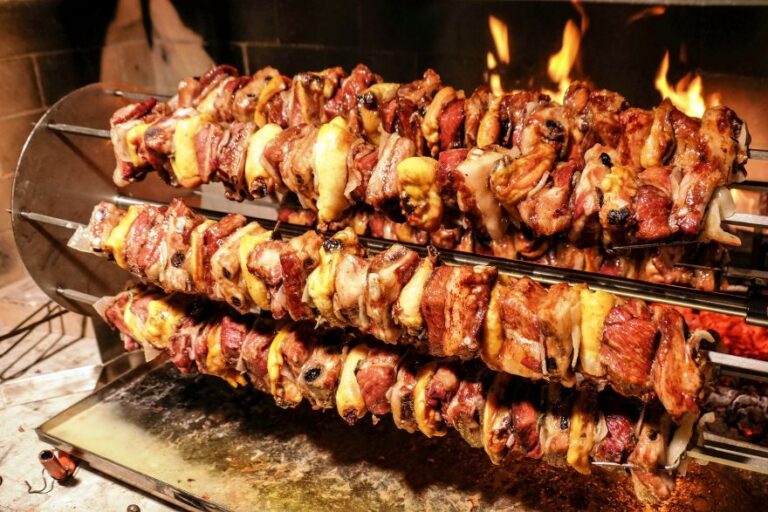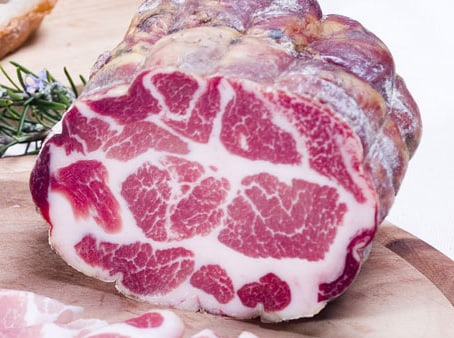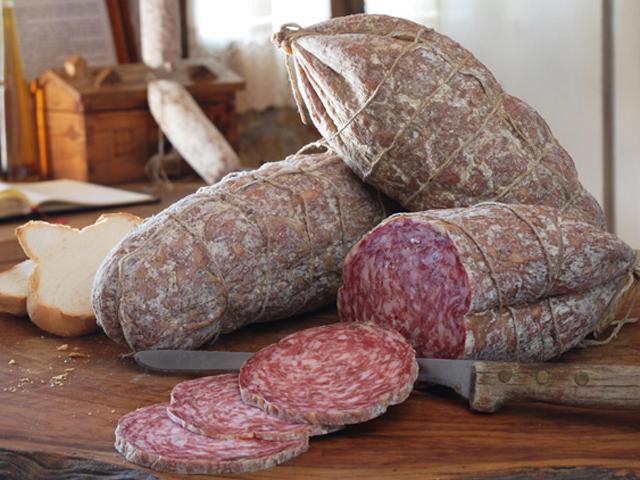
Luganega Trevigiana
The ‘luganega trevisana’ stands out from all the other luganegas that are produced all over the Veneto for its proportions. The pork cheek and neck meat (coming exclusively from local farms) are minced, seasoned with salt and pepper and stuffed into the intestine tied and divided into four wedges. This preparation allows to use the meat close to the wound (fleshing) on the pig’s neck, impregnated with blood, otherwise unusable.
Trevisana luganega can however also be packaged with meat and fat that have not come into contact with the animal’s blood and in this case their color is lighter.
It is available on the market in two versions: a ‘lean’ one suitable for cooking on the grill and a more fatty one that should be used stewed, boiled and in a pan.
In any case, it is consumed ‘fresh’ and therefore does not need either maturation or seasoning.
Tradition provides that “white luganega trevigiana from rice” is packaged with the lean part of fresh pork pancetta, finely ground and drugged; stuffed into a pig intestine, choked with binding every 8-10 cm into bobbins, called in dialect “moreli”, in a single string; drugged with salt, pepper, and the famous Treviso “dosa” in the proportion, as a rule, of 4 grams per kilo of ground beef, without adding preservatives; without seasoning.
History
The name “luganega” is the Venetian translation of “lucanica” of the ancient Lucanians, who made great use of it. Luganega is eaten fresh, normally cooked. In Treviso the luganeghe, already known in the Middle Ages, were traditionally packaged in two versions: the “rice” one called white and the “rosto” one called lean. The “rice” ones were very delicate and the “rosto” ones prepared for 60% with the pancetta without rind and the remainder with lean pork and the “dosa”. It was tradition to prepare, with the rice luganega, the rice soup in broth to which the sausage gave all its moods and aromas; the medieval version has now been abandoned as the custom of preparing the same risotto dish has prevailed in the restaurant, albeit in the semi-liquid version, that is ‘on the wave’, with chopped luganega. The two versions of soup should always be garnished with a sausage, boiled separately, in each bowl.
Composition
second choice meat plus full-bodied fat of pork cheek. salt and pepper.
Production area
province of Treviso, even if a similar salami is produced throughout the Veneto.
to know more
LUGANEGA DA RISO (broth sausage)
Territory interested in production
Luganega is a typically peasant product, usually consumed in the period between the killing of the pig and the maturation of the salami. As far as the Paduan tradition is concerned, the first evidence of these products can be found in the Ruzzantian recipes dating back to around 1530. In the Treviso province it is traditional to use, for these sausages, the less noble parts of the pig (the lungs and the liver) which are mixed with the best meats left over after the production of sopresse and salami. The tradition of this sausage is very ancient, and this is demonstrated by an order of a mayor of Treviso who, already in the sixteenth century, defined its characteristics to defend the product from imitations and counterfeits. Pezòle or luganeghe de tripan are a characteristic product of the Agordina culinary tradition packaged by families to be able to use all the pork meats, even the less valuable ones. “Tripan”, in Ladin Veneto dialect means rind and therefore the name indicates the presence of the pig rind in the mixture. Sausages with turnips are a production invented, in all likelihood, to “stretch” the precious pork meat with a less valuable raw material such as yellow turnip (which was once very abundant in winter). Variable quantities of the root could be used, even higher than that of the meat (today, however, a mixture of less than 50% is preferred), without creating problems in preserving the product. Sausages are also produced in the province of Rovigo, especially in the delta area where the typical Polesana sausage has been produced for decades.
Product description
The various types of sausages produced in Veneto differ in color, shape and size. In fact, they can take on a lighter color if they contain more valuable parts of the pig, while if the minced meat is the bloodiest one, the product shows a darker color. The dimensions vary from a few centimeters (about 4-5 cm for the Treviso luganega), passing through a fairly standardized and usual shape of about 10 cm by 3 in diameter of most productions, up to the pieces that have a cylindrical shape, a length of about 25cm and a diameter of 4-5cm. Obviously, the taste also differs depending on the type, which varies according to the meats and spices used in the dough.
Production process
Pork meats are minced with plate knives with holes of different diameters according to customs and are flavored with salt, pepper and various aromas. The mixture is then stuffed into carefully washed and salted pork intestine. The binding is done manually and the product is then placed in the drying cell and cured hung on racks in rooms with controlled temperature, humidity and ventilation.
Availability
The product is very easy to find, being available at most butchers in the area and on the menus of many local restaurants. More difficult to find, and produced mainly for family consumption, are sausages made with less valuable parts of the pig.
Uses
The “luganeghe” are eaten cooked on the grill or boiled and usually accompanied with cabbage or other boiled vegetables.




